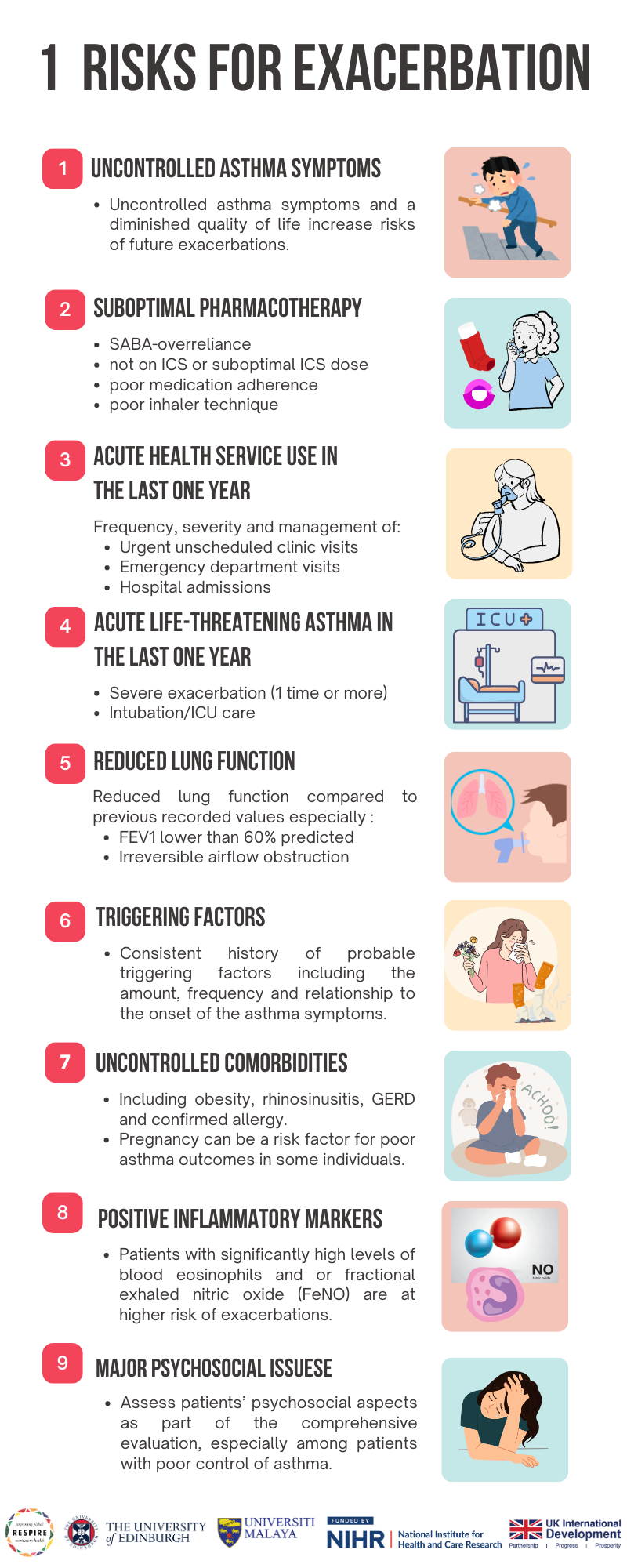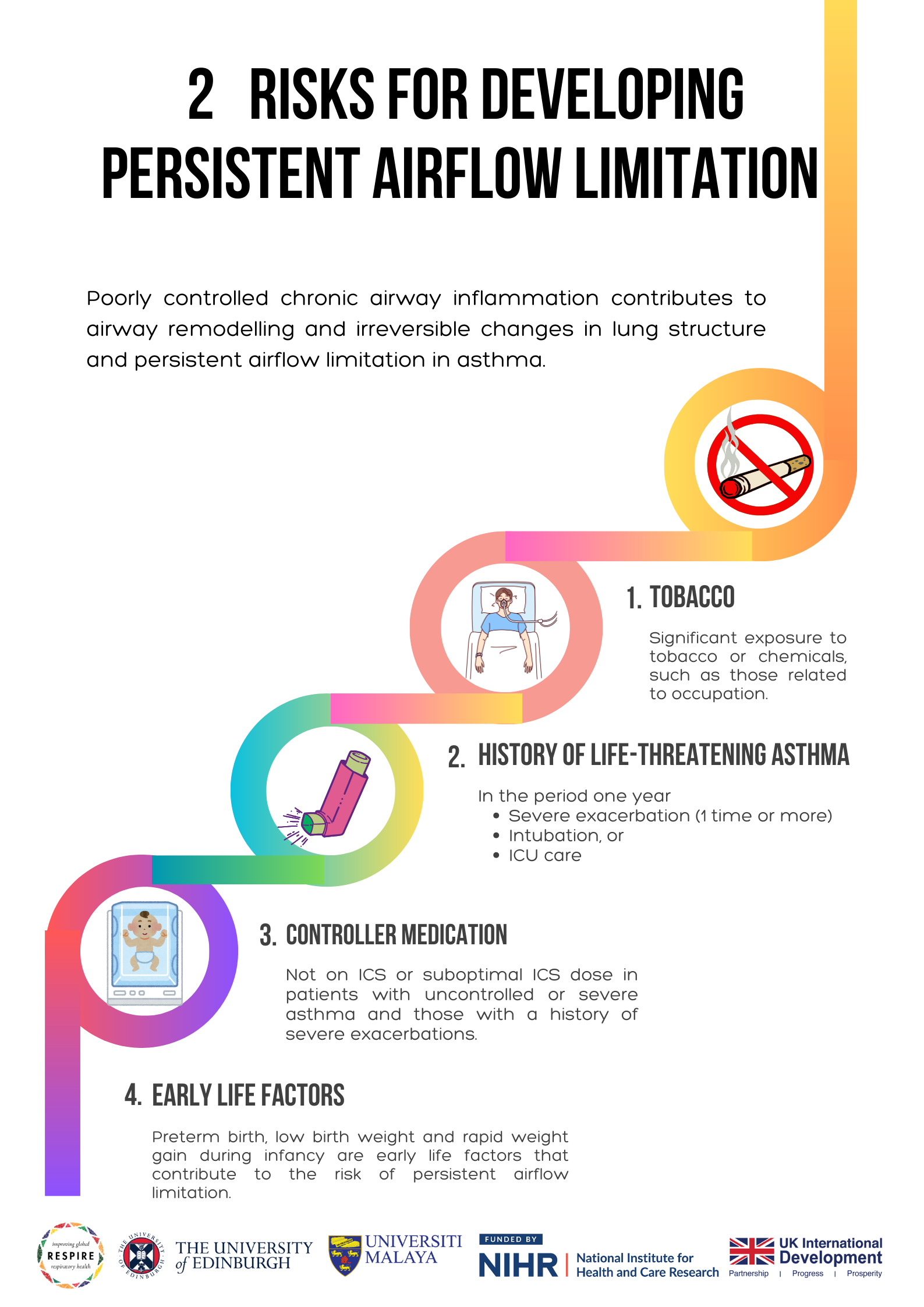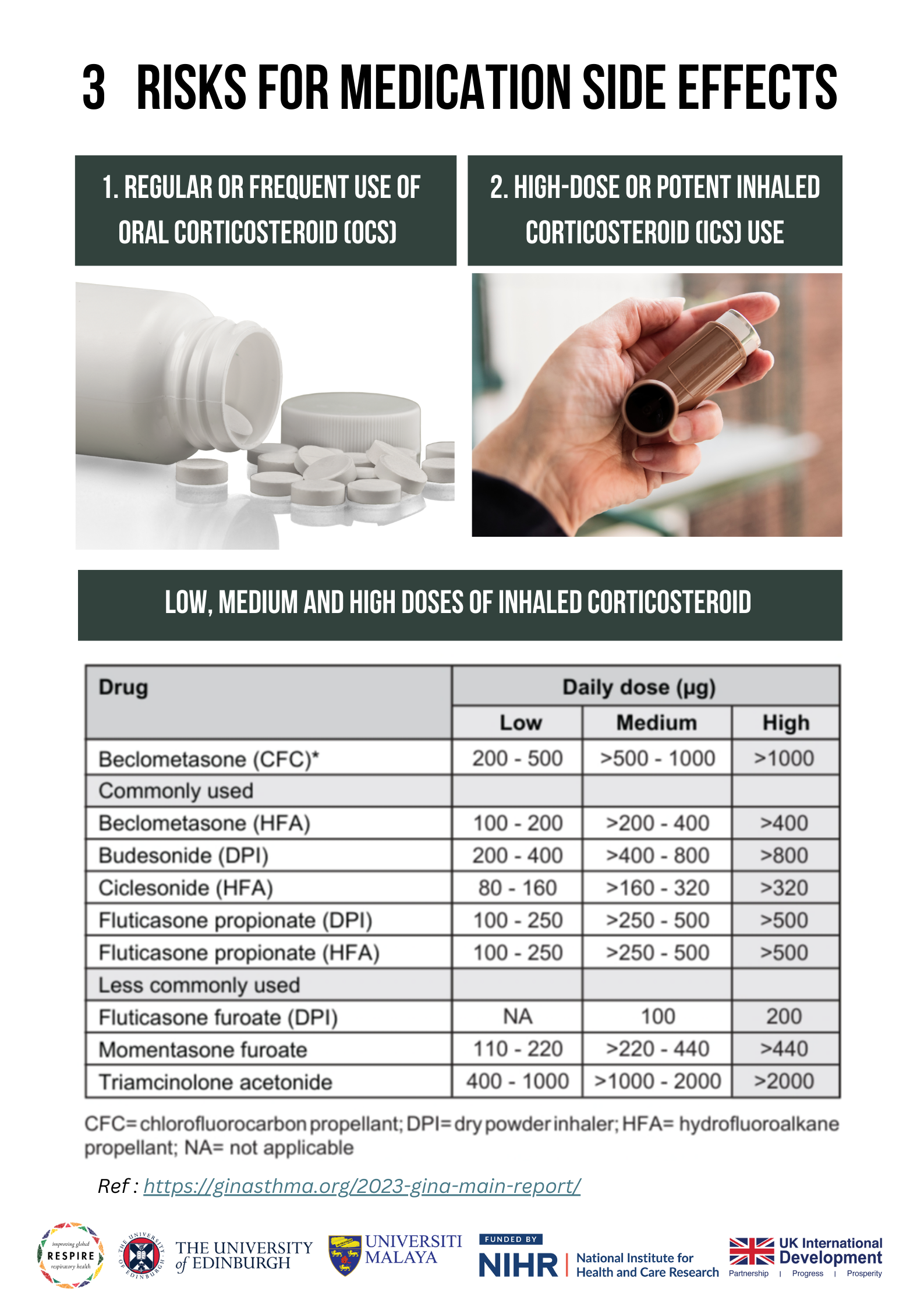Assessment of Asthma Control
.png)
A. Assessment of Symptom Control
Validated screening tools can guide the measurement of asthma control and optimise management. Exercise tolerance is important and should be explored and documented as part of the assessment to guide the patient’s self-management strategies.
Validated asthma control screening tools:
- GINA symptom control tool
- Asthma Control Test (ACT)
- Asthma Control Questionnaire (ACQ)
The GINA symptom control tool can be conveniently used compared to the other two tools as it is simple, and no permission is required to use it.
GINA Symptom Control Tool

Asthma Control Test (ACT)
The Asthma Control Test (ACT) is a simple clinically validated 5-question tool that patients can self-administer. It was developed by QualityMetric Incorporated and GlaxoSmithKline. A score of 20-25 indicates asthma is controlled. There are 2 different ACTs for adults (12 years and older) and children (4 – 11 years), respectively.
- ACT - Age 12 years and older
- ACT - Age 4 to 11 years old
Interpretation
|
ACT Score |
C-ACT Score |
ASTHMA CONTROL |
|
20 – 25 |
20-27 |
Well-controlled |
|
16 – 19 |
13-19 |
Not well-controlled |
|
5 – 15 |
0-12 |
Very poorly controlled |
For information and access : Welcome to the Asthma Control Test
B. Assessment of Risk Factors for Poor Asthma Outcomes
Assessing risks for poor asthma outcomes is equally important alongside control assessment because patients with good asthma control can still be at risk of future severe exacerbations.
Risks of poor asthma outcomes include:



